
JOURNAL OF CONTROLLED RELEASE
Scope & Guideline
Empowering breakthroughs in drug delivery and therapeutics.
Introduction
Aims and Scopes
- Drug Delivery Systems:
Research on various drug delivery systems including nanoparticles, liposomes, hydrogels, and microneedles designed to improve the bioavailability and efficacy of therapeutic agents. - Nanomedicine:
Exploration of nanotechnology applications in medicine, focusing on the design, synthesis, and evaluation of nanomaterials for targeted drug delivery and therapy. - Therapeutic Formulations:
Development of innovative formulations that enhance the delivery and release profiles of drugs, including responsive systems that react to specific biological stimuli. - Biomaterials Engineering:
Investigation of biocompatible materials for drug delivery systems, emphasizing the interaction between drugs and the biological environment to optimize therapeutic outcomes. - Clinical Applications:
Translation of laboratory findings to clinical settings, assessing the safety and efficacy of new drug delivery technologies in various therapeutic areas. - Immunotherapy:
Integration of drug delivery systems with immunotherapeutic strategies to enhance the immune response against cancer and other diseases.
Trending and Emerging
- Stimuli-Responsive Drug Delivery:
Research on drug delivery systems that respond to specific stimuli (e.g., pH, temperature, or light) is increasing, enabling more precise control over drug release profiles. - Extracellular Vesicles (EVs):
The use of EVs as drug delivery vehicles is gaining prominence, leveraging their natural ability to facilitate cellular uptake and modulate immune responses. - CRISPR and Gene Editing Technologies:
The integration of CRISPR and other gene editing technologies into drug delivery systems is emerging as a powerful approach for targeted genetic therapies. - Nanomaterials for Cancer Therapy:
Innovative nanomaterials designed for cancer therapy, including those that enhance immunogenicity and target the tumor microenvironment, are rapidly advancing. - Personalized Medicine Approaches:
The shift towards personalized medicine is reflected in research aimed at tailoring drug delivery systems to individual patient needs, improving treatment outcomes. - Combination Therapies:
There is a growing trend in combining different therapeutic modalities (e.g., chemotherapy and immunotherapy) within a single delivery system to enhance therapeutic efficacy.
Declining or Waning
- Conventional Drug Delivery Methods:
There is a noticeable decline in research focused on traditional drug delivery methods as the field shifts towards more innovative approaches like nanotechnology and personalized medicine. - Non-targeted Drug Delivery:
Research on non-targeted delivery systems is decreasing as there is a growing emphasis on targeted therapies that improve specificity and reduce side effects. - Passive Release Mechanisms:
Studies exploring passive release mechanisms are becoming less common, with a trend towards developing stimuli-responsive systems that offer more control over drug release. - Single-Modal Therapies:
The exploration of single-modal therapies is waning as there is a shift towards combination therapies that integrate multiple modalities for enhanced efficacy. - In vitro Models:
There is a reduction in the use of basic in vitro models for drug testing, with more research focusing on complex in vivo models that better mimic human physiology.
Similar Journals

Journal of Reports in Pharmaceutical Sciences
Fostering Excellence in Pharmaceutical Science Reporting.Journal of Reports in Pharmaceutical Sciences is a pivotal publication in the realm of pharmaceutical research, disseminating innovative findings that cater to the evolving landscape of pharmacology, toxicology, and biomedical engineering. Published by Wolters Kluwer Medknow Publications, the journal serves as a bridge for scholars and practitioners aiming to enhance their understanding of drug development, therapeutic advances, and biopharmaceutical technologies. With an ISSN of 2322-1232 and E-ISSN 2322-5106, it has established its relevance from 2012 to 2022, occupying notable quartile rankings, including Q3 in Pharmacology, Toxicology, and Pharmaceutics. Despite being categorized in Q4 in some areas, the journal's commitment to quality research ensures it remains a respected platform for disseminating significant insights. Researchers, professionals, and students alike will find this journal an indispensable resource for staying updated on critical advancements in pharmaceutical sciences, making it a go-to source for impactful studies that shape industry practices and academic inquiries.
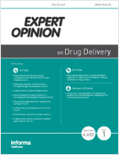
Expert Opinion on Drug Delivery
Delivering Expertise to Enhance Therapeutic AdvancementsExpert Opinion on Drug Delivery is a leading journal in the field of pharmaceutical science, published by Taylor & Francis Ltd. With an impressive impact factor and a prestigious Q1 ranking in 2023, it stands out as a vital resource for researchers, professionals, and students dedicated to advancing drug delivery technologies. Established in 2004, the journal has consistently provided a platform for critical insights and expert analyses, bridging the gap between innovation and application in drug delivery systems. Although it currently does not offer Open Access options, the journal's rigorous peer-review process ensures the dissemination of high-quality research that significantly contributes to the fields of pharmacology, toxicology, and pharmaceutics. With its robust ranking of 13th out of 183 in Scopus, the journal continues to foster discourse and collaboration among experts, thereby enhancing the advancement of therapeutic options and improving patient outcomes.

Biomaterials Research
Exploring new horizons in biomaterials science.Biomaterials Research, published by the American Association for the Advancement of Science, is a prominent open access journal established in 2014, dedicated to advancing the field of biomaterials. Based in the United Kingdom, this journal has swiftly become an essential platform for researchers and practitioners, offering groundbreaking insights in biomaterials, biomedical engineering, ceramics and composites, and miscellaneous medical fields. With its impressive Q1 ranking across multiple relevant categories in 2023 and its strong Scopus rankings, including a remarkable 90th percentile in the medicine category, Biomaterials Research showcases high-quality, peer-reviewed research designed to address both practical and theoretical challenges in biomaterials science. As an open access journal, it promotes wider dissemination and accessibility of research findings, crucial for fostering innovation and collaboration within the scientific community. Researchers, professionals, and students alike are encouraged to contribute, read, and engage with the latest developments in this dynamic field.

TROPICAL JOURNAL OF PHARMACEUTICAL RESEARCH
Connecting scholars to tackle health challenges in the tropics.Tropical Journal of Pharmaceutical Research is an esteemed open-access platform dedicated to advancing the field of pharmaceutical sciences, published by the Pharmacotherapy Group in Nigeria. With an ISSN of 1596-5996 and open access established since 2002, this journal serves as a critical resource for researchers, professionals, and students seeking to disseminate and access high-quality research in both pharmaceutical science and pharmacology. Despite its ranking in the third quartile (Q3) for Pharmaceutical Science and the fourth quartile (Q4) in Pharmacology as of 2023, the journal continues to stand out with its commitment to fostering significant dialogue and innovation in the scientific community. Anchored at the University of Benin, Faculty of Pharmacy, the journal invites contributions that explore novel pharmaceutical research, clinical applications, and drug development, playing a vital role in addressing health challenges that are particularly relevant to tropical regions. Researchers can look forward to publishing their findings in a journal that not only promotes the sharing of knowledge but also enhances the scientific discourse within a rapidly evolving field.

Therapeutic Delivery
Elevating Pharmaceutical Science with Cutting-Edge ResearchTherapeutic Delivery is a prestigious journal dedicated to advancing the field of Pharmaceutical Science, published by Newlands Press Ltd. Since its inception in 2010, this journal has become a vital resource for researchers and professionals alike, focusing on innovative drug delivery systems and therapeutic approaches that enhance patient care. With an impressive impact factor reflective of its credibility and scholarly influence, Therapeutic Delivery is currently ranked in the Q2 quartile and placed at Rank #64 out of 183 in the realm of Pharmacology, Toxicology, and Pharmaceutics, showcasing its prominence in the field. The journal operates with an Open Access format, ensuring that groundbreaking research is readily available to a global audience. Based in the United Kingdom, it publishes comprehensive articles that cover a wide spectrum of topics within pharmaceutical sciences, from molecular mechanisms to clinical applications, thus catering to both academic and professional readerships. Researchers, students, and industry professionals will find Therapeutic Delivery an invaluable platform for sharing insights and fostering advancements in therapeutic methodologies.
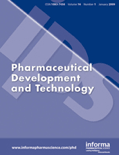
PHARMACEUTICAL DEVELOPMENT AND TECHNOLOGY
Advancing Pharmaceutical Innovations for a Healthier Tomorrow.PHARMACEUTICAL DEVELOPMENT AND TECHNOLOGY is a premier journal published by Taylor & Francis Ltd that focuses on the latest advancements and innovations in the field of pharmaceutical science. Established in 1996, this journal has evolved to encompass a wide array of interdisciplinary studies relevant to drug development, formulation technology, and delivery systems, serving as a platform for researchers and professionals to share groundbreaking findings. With an impressive impact factor and ranked in both Q2 in Pharmaceutical Science and Q3 in Medicine (miscellaneous), it positions itself among the top-tier journals in pharmacology and toxicology. The journal's insights are critical for scholars and practitioners aiming to enhance therapeutic efficacy and safety. Access options for the content remain traditional, thus supporting a comprehensive approach to scientific literature. Throughout its converged years up to 2024, PHARMACEUTICAL DEVELOPMENT AND TECHNOLOGY continues to play a vital role in shaping pharmaceutical education and practice.
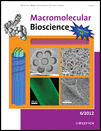
MACROMOLECULAR BIOSCIENCE
Elevating Research Standards in Biomolecular DisciplinesMACROMOLECULAR BIOSCIENCE, published by WILEY-V C H VERLAG GMBH, is a leading journal in the fields of bioengineering, biomaterials, biotechnology, materials chemistry, and polymers and plastics. With a convergence of scientific inquiry since its inception in 2001, the journal has established itself as a vital resource for researchers and professionals exploring the interface of molecular sciences and biosystems. It boasts impressive Scopus rankings, including Q1 status in multiple categories, reflecting its significant contribution to advancing knowledge and innovation in the polymer and biomaterials domains. While the journal does not currently offer open access options, its rigorous peer-review process ensures the publication of high-quality research that fuels academic discourse. Positioned in Weinheim, Germany, MACROMOLECULAR BIOSCIENCE aims to bridge theoretical understanding with practical applications, making it an essential reference for students, academics, and industry practitioners dedicated to the evolving landscape of macromolecular bioscience.
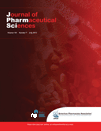
JOURNAL OF PHARMACEUTICAL SCIENCES
Advancing pharmaceutical knowledge, shaping future innovations.The JOURNAL OF PHARMACEUTICAL SCIENCES, published by ELSEVIER SCIENCE INC, stands as a cornerstone in the field of pharmaceutical sciences, offering a platform for innovative research and advancements since its inception in 1961. With an impressive Scopus Rank of #36 out of 183 in the Pharmaceutical Science category, this journal is recognized for its commitment to disseminating high-quality, peer-reviewed studies that significantly contribute to the realms of pharmacology, toxicology, and pharmaceutics. Holding a 2023 Q2 category quartile, it attracts a diverse readership encompassing researchers, industry professionals, and students eager to advance their understanding and expertise. While the journal is not open access, it ensures valuable insights in every issue, making it an essential resource for those dedicated to the evolving landscape of pharmaceutical research. With an impact factor that reflects its relevance and influence, the JOURNAL OF PHARMACEUTICAL SCIENCES continues to shape the discourse in its domain, fostering innovation and collaboration among scholars worldwide.

Advanced Healthcare Materials
Innovating for a Healthier TomorrowAdvanced Healthcare Materials, published by WILEY, is a leading journal in the interdisciplinary fields of biomaterials, biomedical engineering, and pharmaceutical science. With its ISSN 2192-2640 and E-ISSN 2192-2659, the journal provides a platform for innovative research that encompasses the design, fabrication, and application of advanced materials in healthcare settings. Recognized for its high impact, it boasts a Q1 ranking in several categories, including a notable rank of #7/183 in Pharmaceutical Science and 14/137 in Biomaterials according to Scopus rankings. This reflects the journal’s commitment to publishing cutting-edge studies that push the boundaries of science and technology in medicine. Although it operates under a subscription model, articles published in this journal significantly impact the global research community and play a crucial role in the advancement of healthcare technologies. With a publication history from 2012 to 2024, Advanced Healthcare Materials remains an essential resource for researchers, professionals, and students engaged in the groundbreaking intersections of materials science and healthcare.
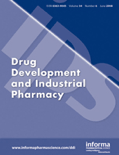
DRUG DEVELOPMENT AND INDUSTRIAL PHARMACY
Innovating Solutions for Modern Pharmaceutical ChallengesDrug Development and Industrial Pharmacy is a prestigious journal published by Taylor & Francis Ltd, focusing on the critical field of pharmaceutical sciences. With an ISSN of 0363-9045 and an E-ISSN of 1520-5762, the journal has been an essential resource for researchers and professionals since its inception in 1974. It occupies a crucial niche within Drug Discovery, Organic Chemistry, and Pharmaceutical Science, currently ranked in the second and third quartiles, reflecting its solid contribution to the field. The journal encompasses a wide array of topics, including drug development processes, formulation, and industrial manufacturing alongside cutting-edge research in pharmacology and toxicology. With a commendable Scopus ranking demonstrating high relevance—ranked #44 in Pharmaceutical Science—it serves as a vital forum for academia and industry to share innovative findings and methodologies. While it does not offer open access, the journal remains an invaluable resource for those seeking to advance their knowledge and enhance their research in pharmaceutical development.